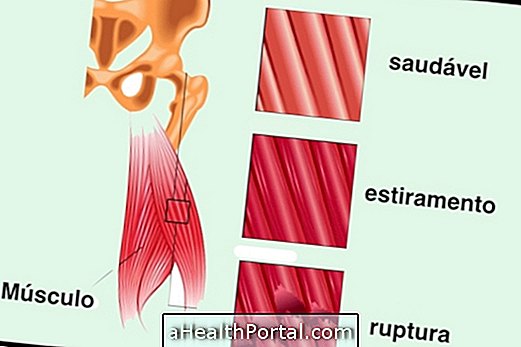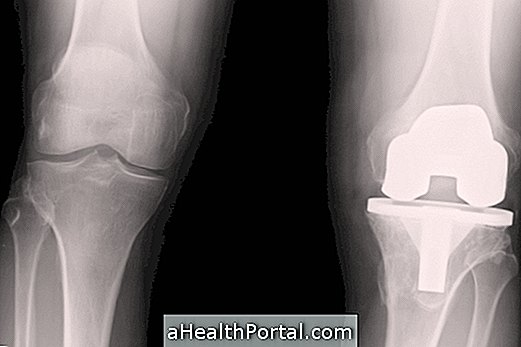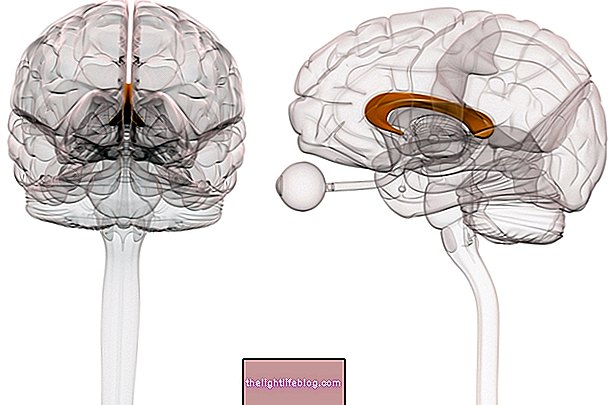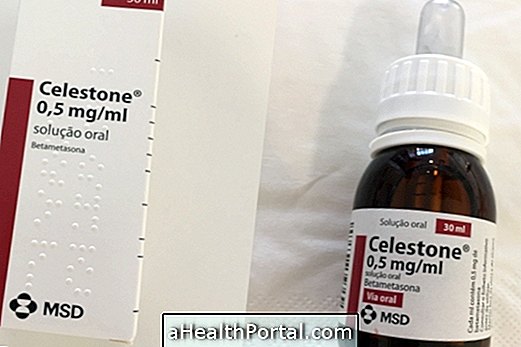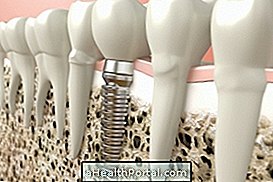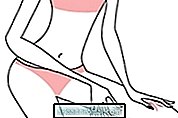Treatment for tendinitis can be done with resting of the affected joint, ice packs in the affected region for approximately 20 minutes, about 3 to 4 times a day, and analgesic and anti-inflammatory drugs, such as Ibuprofen or Naproxen, for example .
Usually, tendinitis goes through these measures, however, it may be necessary for the individual to do physical therapy that uses features like ultrasound, exercises or massage to treat tendon inflammation. Surgery can also be used, however, only in the most severe cases when the treatment was not effective and when there is a ruptured tendon.
Here's how feeding and physical therapy can help heal tendinitis:

When the patient exhibits symptoms of tendonitis, such as pain, especially when moving the affected region, decreased strength or difficulty in performing some movements, rest the affected region, stopping or decreasing the intensity of the activity until the inflammation passes. Which means you may need to take a vacation from work or ask for a break away from it.
To prevent tendonitis, see some stretches indicated to do at home or at work.
Remedies for Tendonitis
The orthopedic doctor may prescribe the use of medicines to take in the form of tablets or to pass on the pain site, in the form of cream, ointment or gel. Some examples are:
- Ibuprofen
- Naproxena
- Paracetamol
- Cataflan
- Come back
- Calminex
- Diclofenac diethylammonium
- Sucupira ointment
- Gel massager for sucralose ointment
Anti-inflammatory tablets should not be used for more than 10 days and always before taking each tablet it is also important to take a gastric protector like Ranitidine or Omeprazole to protect the stomach walls, thus avoiding the gastritis caused by the medicines. Ointments, creams or gels can be applied 3 to 4 times a day at the exact location of the pain, with a light massage, until the skin completely absorbs the product.
Physiotherapy for tendonitis
Physical therapy for tendonitis can be done through features such as ultrasound or ice packs, massages, and stretching and muscle strengthening exercises to relieve pain and inflammation of the affected tendon and to maintain the movement and strength of affected muscles.
Ultrasound can be performed using the gel itself for this equipment or with a mixture of this gel with the anti-inflammatory gel such as Voltaren. However, not all ointments can be used in this way because they can prevent the penetration of ultrasound waves having no effect.
Physical therapy sessions can be performed daily, 5 times a week, or according to the person's availability. However, the closer a session is to the other, the better the results due to the cumulative effect.

Immobilize can help
Using a splint to immobilize the sore joint can help decrease movement, helping to relieve pain and inflammation. However, prolonged or frequent use of splint may weaken muscles, which contributes to worsening tendinitis. Thus, the joint should only be immobilized due to tendonitis after the orthopedist or physiotherapist has indicated.
Home treatment
A good home treatment for tendinitis is the ice packs as they help relieve pain and inflammation. To make the ice packs, simply wrap a few pebbles of ice in a thin towel, or diaper, making a bundle and letting it sit on the affected spot for up to 20 minutes in a row.
Initially, this may cause some discomfort, but this should pass in approximately 5 minutes. This procedure can be performed about 3 to 4 times a day in the initial phase of treatment in the first few days and 1 or 2 times a day when symptoms subside. Know compresses and teas to treat tendinitis in: Home remedy for tendonitis.
Surgery for tendonitis
Surgery is only indicated when tendinitis has worsened and there is deposition of calcium crystals in the tendon, it is necessary to scrape or sew the tendon after its rupture. Surgery is relatively simple and recovery is not very time-consuming.
The person should stay about 5 to 8 days with a splint after surgery and after the doctor's release, the person can go back to do a few more physical therapy sessions to fully recover.
How to prevent tendinitis from coming back
To avoid the recurrence of tendinitis it is important to find out what caused it. Causes range from repetitive daytime movements such as typing on the computer keyboard or cell phone several times a day, and holding a very heavy bag for more than 20 minutes, for example. This type of one-time excessive effort or the constant injuries caused by repetitive movements lead to tendon inflammation and consequently localized pain near the joint.
Thus, to cure tendinitis and not allow it to appear again one should avoid these situations, taking breaks at work and avoiding excessive physical activity, for example.
For those who work sitting, good posture at work is also important to prevent muscle contractures and overloads on joints. See the right way to sit on 6 tips to keep good posture seated.
